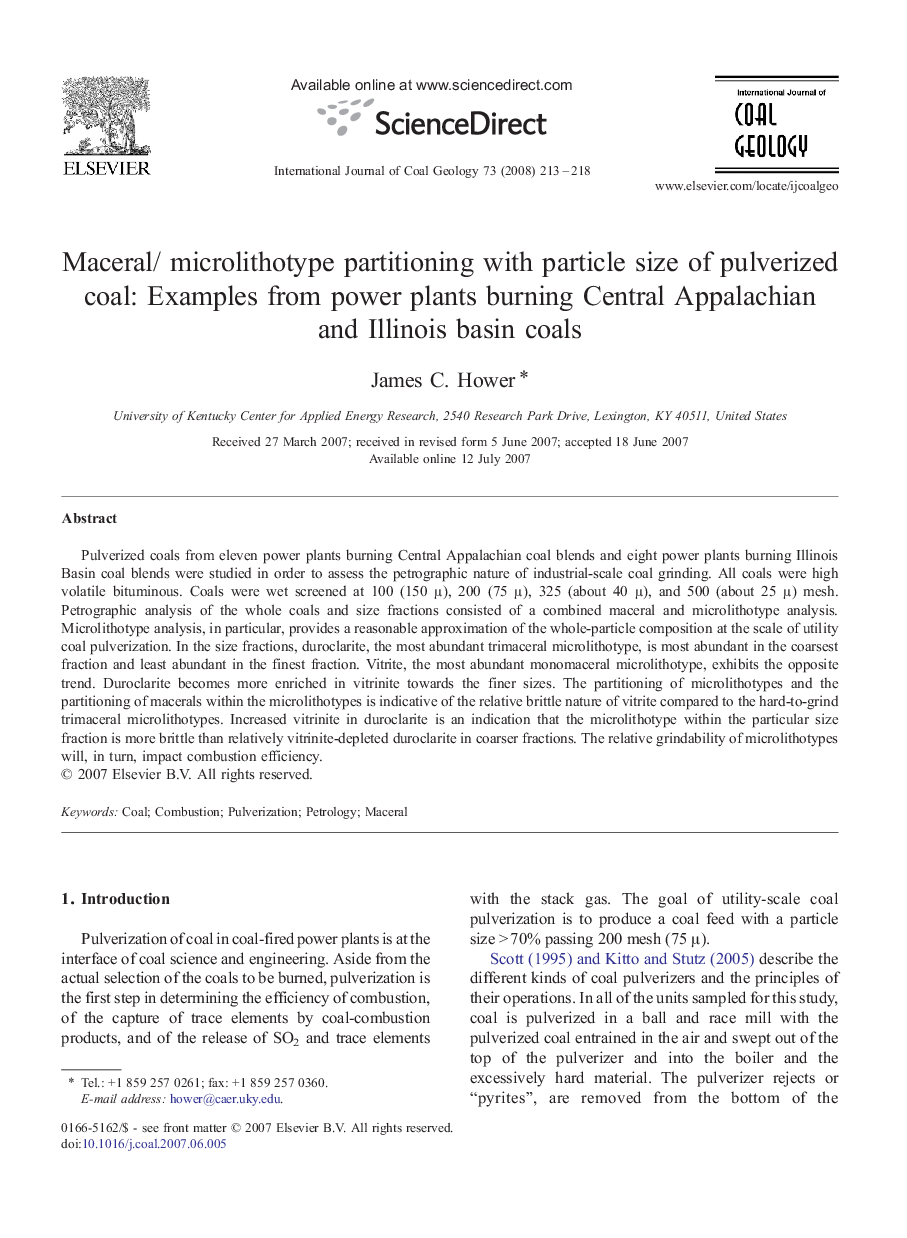| Article ID | Journal | Published Year | Pages | File Type |
|---|---|---|---|---|
| 1754121 | International Journal of Coal Geology | 2008 | 6 Pages |
Pulverized coals from eleven power plants burning Central Appalachian coal blends and eight power plants burning Illinois Basin coal blends were studied in order to assess the petrographic nature of industrial-scale coal grinding. All coals were high volatile bituminous. Coals were wet screened at 100 (150 μ), 200 (75 μ), 325 (about 40 μ), and 500 (about 25 μ) mesh. Petrographic analysis of the whole coals and size fractions consisted of a combined maceral and microlithotype analysis. Microlithotype analysis, in particular, provides a reasonable approximation of the whole-particle composition at the scale of utility coal pulverization. In the size fractions, duroclarite, the most abundant trimaceral microlithotype, is most abundant in the coarsest fraction and least abundant in the finest fraction. Vitrite, the most abundant monomaceral microlithotype, exhibits the opposite trend. Duroclarite becomes more enriched in vitrinite towards the finer sizes. The partitioning of microlithotypes and the partitioning of macerals within the microlithotypes is indicative of the relative brittle nature of vitrite compared to the hard-to-grind trimaceral microlithotypes. Increased vitrinite in duroclarite is an indication that the microlithotype within the particular size fraction is more brittle than relatively vitrinite-depleted duroclarite in coarser fractions. The relative grindability of microlithotypes will, in turn, impact combustion efficiency.
